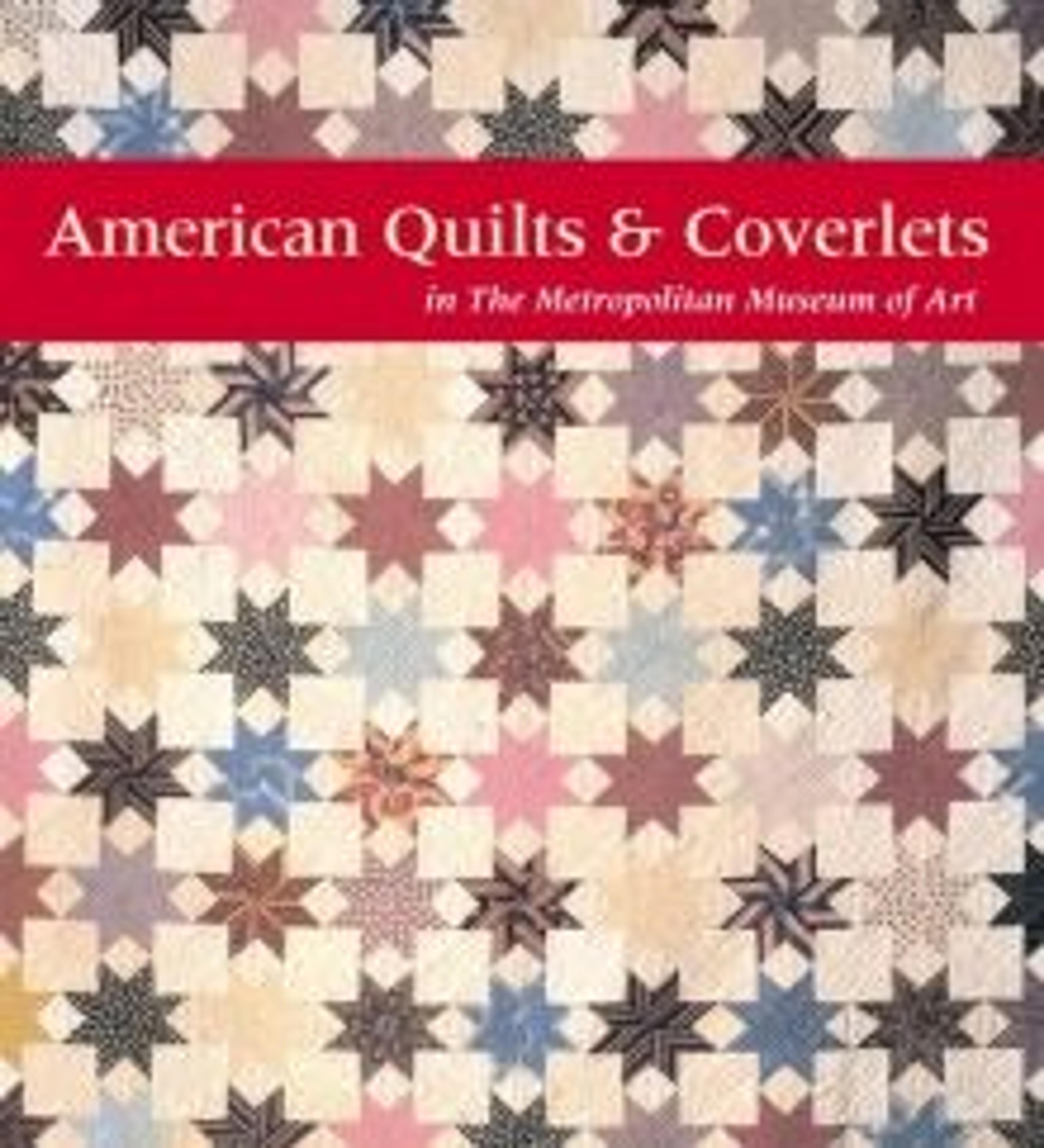Quilt, Marseilles type
During the later decades of the eighteenth century, the cotton-weaving industry in England expanded rapidly. The areas around Manchester and nearby Bolton, Lancashire, produced cotton yardage for various purposes and became well known for two different types of white cotton bedcovers. In 1763, George Glasgow and Robert Elder registered a patent for a "new method of weaving and quilting in the loom, in every method, fashion and figure, as well as in imitation of the common manner of quilting, as of India, French, and Marseilles quilting." Soon afterward, Manchester weavers began to use this method to produce a cloth they called Marseilles quilting, used both in yardage and as bedcovers.
The name given to the Manchester weavers' product derives from the French port of Marseilles, which was a center for hand-quilted petticoats and coverlets in the seventeenth and eighteenth centuries. This doublecloth was woven on a drawloom with a layer of heavy cording between the top and bottom layers: the finished cloth resembled fine hand quilting. A drawloom could be quite large in size. With a loom large enough to make a bedcover such as this one, the weaver would need to employ one or more drawboys to pull (or "draw") up predetermined warp threads in sequence in order to compose the cloth's pattern.
It is known that, during the second half of the eighteenth century, American merchants were ordering yardage of Marseilles quilting from England to be used for petticoats and men's summer waistcoats as well as ready-made coverlets. Because of its stylistic similarity to surviving early documented samples of Marseilles quilting, our example can be dated to between 1780 and 1820. It is hard to be more specific because Marseilles quilts remained popular throughout the nineteenth century.
The name given to the Manchester weavers' product derives from the French port of Marseilles, which was a center for hand-quilted petticoats and coverlets in the seventeenth and eighteenth centuries. This doublecloth was woven on a drawloom with a layer of heavy cording between the top and bottom layers: the finished cloth resembled fine hand quilting. A drawloom could be quite large in size. With a loom large enough to make a bedcover such as this one, the weaver would need to employ one or more drawboys to pull (or "draw") up predetermined warp threads in sequence in order to compose the cloth's pattern.
It is known that, during the second half of the eighteenth century, American merchants were ordering yardage of Marseilles quilting from England to be used for petticoats and men's summer waistcoats as well as ready-made coverlets. Because of its stylistic similarity to surviving early documented samples of Marseilles quilting, our example can be dated to between 1780 and 1820. It is hard to be more specific because Marseilles quilts remained popular throughout the nineteenth century.
Artwork Details
- Title:Quilt, Marseilles type
- Date:ca. 1800–1820
- Geography:Possibly made in Greater Manchester, Manchester, England
- Culture:British
- Medium:Cotton, woven
- Dimensions:120 x 132 in. (304.8 x 335.3 cm)
- Credit Line:Bequest of Maria P. James, 1911
- Object Number:11.60.329
- Curatorial Department: The American Wing
More Artwork
Research Resources
The Met provides unparalleled resources for research and welcomes an international community of students and scholars. The Met's Open Access API is where creators and researchers can connect to the The Met collection. Open Access data and public domain images are available for unrestricted commercial and noncommercial use without permission or fee.
To request images under copyright and other restrictions, please use this Image Request form.
Feedback
We continue to research and examine historical and cultural context for objects in The Met collection. If you have comments or questions about this object record, please contact us using the form below. The Museum looks forward to receiving your comments.
